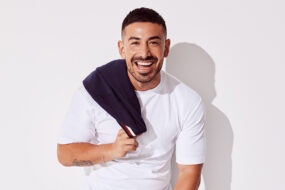Why more people are getting (and some regretting) tattoos
Tattoos are increasingly popular among Aussies, but you need to choose your body ink wisely as research shows tattoo regret is also common.
Once upon a time, the only people sporting ink were criminals, bikies and sailors.
These days tattoos are so commonplace, one-in-five Australians have one, according to a recent survey by McCrindle.
New research has also shown tattoos are no longer a negative in many workplaces.
But while the stigma may have faded, tattoos are permanent.
So, here’s what you need to know before you indulge the urge to ink.
- Get bejewelled: Five things to know before getting your ears pierced
What is driving the tattoo trend?
McCrindle director of advisory Ashely Fell says the desire for ink is largely fuelled by fashion and the media.
“The fact that social media regularly shows celebrities, movie stars and sports people with tattoos is helping to change consumer attitudes and behaviour towards tattoos and how they are perceived,” Ashley says.
Tattoos may also be cathartic as a recent study revealed they may be a powerful aid to emotional recovery from disease.
- Insta-worthy: Hair trends going viral on social media
What are the current tattoo trends?
The biggest growth in tattoo design is in the phrase or word category, according to Ashley.
And while most Australians got their first tattoo between the ages of 18 and 25 (48%), over a third (36%) were aged 26 or older.
“Tattoos are also more common among women, and older women at that, indicating that tattoos are moving to a form of self-expression and symbolic meaning,” she says.
Tattoo artist Naomi Groves says the most popular tattoos include script, quotes, roman numerals, infinity symbols and feathers.
“Usually, people who are older want their tattoos to have a lot of meaning, whereas younger people don’t really care, it’s more about the aesthetic,” Naomi says.
- Want to dazzle: Try the crystal make-up trend
How common is tattoo regret?
One-in-five Australians may have a tattoo, but nearly as many (22%) regret them, according to the McCrindle survey.
Hilary Quinn, laser technician and tattoo removalist, says some of the most common regrets are names (particularly ex-partners), tribal markings, Chinese and Japanese characters and script.
“Having a wise saying may seem like a good idea when you’re an idealistic 18-year-old, but it doesn’t always wash when you’re 30,” Hilary says.
The most regretted location for a tattoo is the face and neck, followed closely by the lower back.
What to do if you regret your ink
To remove tattoos, powerful bursts of laser energy are directed at the image to break down the ink.
Treatments take up to 30 minutes, depending on size, and an average of 10-15 sessions are required.
“If you want a really great result, have it done slowly,” Hilary says.
“My advice to anyone wanting a tattoo is to get one that is easily removed – go for fine lines and sheer shading, avoid block ink, and put it somewhere you can’t see all the time.”
- Get buffed: How laser has reshaped beauty treatments
Why I’ll never get another tattoo
Ally Smith has four words of advice for anyone considering a tattoo: think before you ink.
She went under the needle at 15 and has since tried unsuccessfully to have all three of her tattoos removed.
“I thought they were cool because I was the only person at school who had one,” Ally says.
“But they are all terrible, and I hated them within about three years.”
She says the pain of removal was “ten times worse” than getting the tattoo.
“I’d never get another one,” she says.
“My daughter is three-and-a-half, and I’m going to keep them as an ugly reminder of what can happen, if she ever wants one.”
Written by Dimity Barber.






